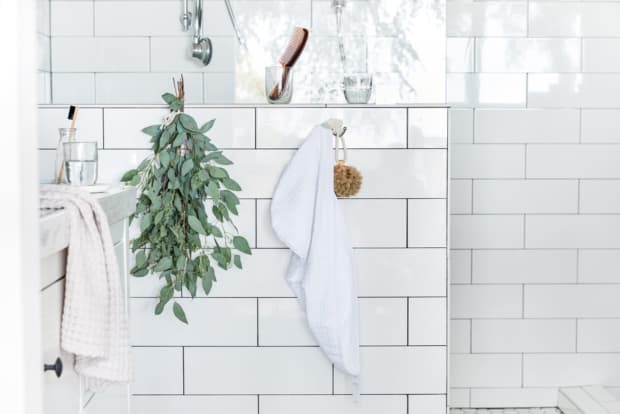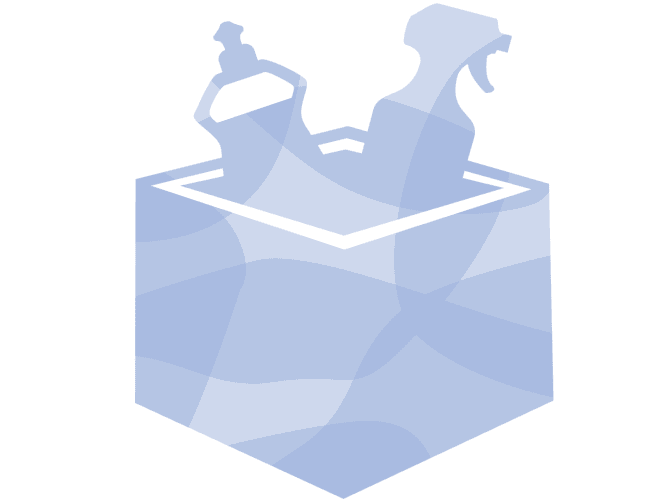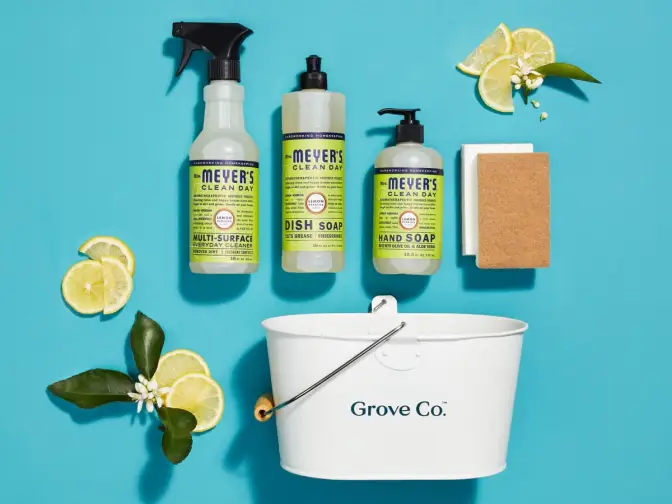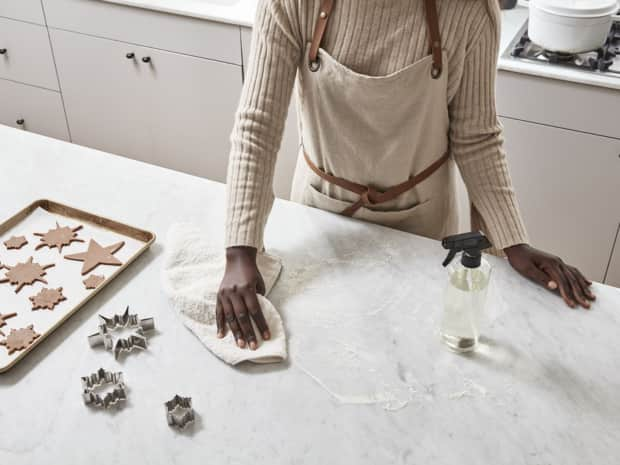Aspergillus:
A well-known allergenic mold, aspergillus is often found in air conditioning systems and on spoiled foods.

Last Updated: July 16, 2021
Tired of dealing with disgusting mold or mildew in your home? Learn how to kill mold naturally from the pros at Grove and prevent it from ever coming back.
When it comes to keeping a clean and tidy home, you’re a boss. Each week, you take pride in crossing everything from dusting to mopping off your cleaning checklist. So, after all that hard work, what happens when you notice that nasty, black mold and mildew growing in your shower or around the kitchen sink?
The cleaning gurus at Grove are here to answer all your questions about how to get rid of mold in your home. Read on to learn more about what kills mold, what causes it to grow in the first place, and which natural products you can use to prevent it for good!

According to the Environmental Protection Agency, different types of molds can be found pretty much anywhere there’s moisture and oxygen (think of your damp kitchen sponge or leaky window sills). As members of the fungi kingdom, all types of molds can quickly spread indoors if they’re not killed quickly.
Let’s face it--you really don’t want to be dealing with mold or mildew, ever. But, there are some basic differences between the two. Although mold and mildew are both types of fungi that can grow on a variety of surfaces, mildew is actually a plant disease.
The biggest differences between mold and mildew are their colors and textures. Inside the home, mold is often black or green and thick and sticky. Mildew is often gray or white and powdery looking.
Now that you know what mold is and what sets it apart from mildew, you’re probably wondering what types of molds may be lurking in the cracks and crevices of your home.
Here’s a basic overview of some of the most common types of mold to watch out for:
A well-known allergenic mold, aspergillus is often found in air conditioning systems and on spoiled foods.
Usually a black or green pepper-like substance, this type of mold sometimes grows on the backs of toilets (yuck!) or within air ducts.
Also known as “black mold,” this dangerous type of mold has a greenish-black appearance and requires constant moisture to thrive.
Anywhere you have a damp, moisture-prone area in your home, mold could be growing. Mold loves high humidity areas like basements, showers, and places near heating and cooling devices.
You may have a mold issue in moist areas that exist in crawl spaces and ductwork, which might be difficult to identify since these areas are often hidden from the naked eye.
What about that musty smell in your laundry? Is that mold or mildew?
GROVE TIP
Each time you take a shower, run the bathroom fan or open a window to let fresh air in and prevent mold growth!
Do the same thing in the kitchen whenever you’re using the stove or doing the dishes.

You might feel like you need superhuman strength to clean mold and mildew in your home. The truth is there are several natural mold prevention products that effectively kill mildew and mold without the use of harsh chemicals that have health risks.
You probably already have this antifungal and antibacterial solution in your medicine cabinet. Natural cleaning products with hydrogen peroxide are quite effective at killing mold.
Use them to clean your kitchen counters, bathroom, and even wall surfaces!
So, is bleach or vinegar better to kill mold? Vinegar naturally cleans, disinfects, and deodorizes, but it also kills many different types of mold.
Use undiluted regular white vinegar (adding water will make it less effective). Look for a solution with at least 5% acidity or a cleaning solution that has 6% acidity.
Spray the vinegar onto the surface, wait an hour, and then voila! Your mold problems will soon be a thing of the past.
Baking soda has a variety of practical uses around the home. Use it to remove nasty odors from the fridge, alleviate heartburn, and combat mold.
Add ¼ tablespoon to a spray bottle with water, and then simply spray away! Once you’re done, use a scrub brush to remove the baking soda residue and mold from each surface.
You already know how great essential oils smell, but these natural compounds can also get rid of mold, too.
Ward off mold with tea tree oil, cinnamon, clove oil, or thyme oil. Each option will kill mold and prevent spores from coming back.
Combine a teaspoon of the oil of your preference with a cup of water in a spray bottle. After spraying, allow one hour for the solution to dry, then wipe away with a clean towel.
Lemons are a household staple that break down mold and leave disinfected surfaces behind. To use this method, juice a few lemons and pour the juice over the affected areas.
Let the juice sit for five minutes, then simply wipe the surfaces down with a damp towel.

Wondering who Grove is, what types of products we offer, and how to get a free gift set when you sign up? Learn more about flexible monthly shipments, customizing your shipment, and joining millions of happy households — no monthly fees or commitments required.
GROVE TIP
To avoid any health problems or respiratory problems caused by contact with mold spores, throw away any rags, paper towels, or other disposable products you used in a sealed garbage bag. Then, wash your clothes immediately in a separate load with hot water.
The amount of time it will take to kill mold will depend on how much mold you’re dealing with and what type of cleaning product you’re using to remove it.
Your best bet is to refer to our recommendations about how long the solution should dry. If you notice that there still might be mold after cleanup, try the solution again or test a different one from above.

Learn how to identify and eliminate the source of that mystery stench in your home.

Banishing these night-dwellers is easy—and it doesn’t have to leave your house smelling like mothballs.

What do you do when a mouse invites itself inside? Here’s how to deal with mice humanely.

Tired of flour bugs calling first dibs on your food? Banish the fiends with these tips.